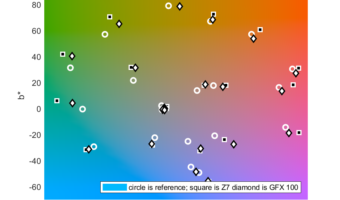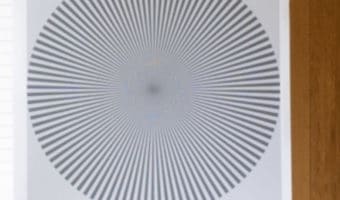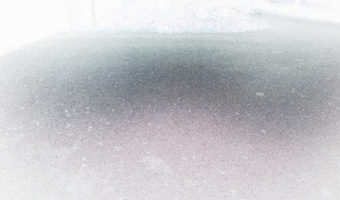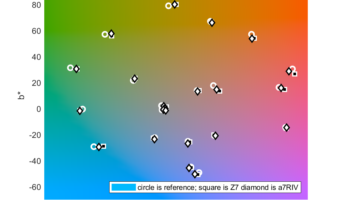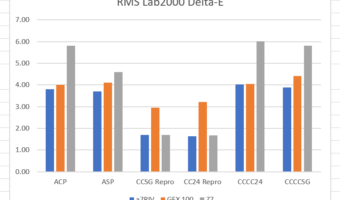In this test and this one, I showed that you could get the colors of developed files from the Sony a7RIV, the Nikon Z7, and the Fujifilm GFX 100 reasonably close if you used Lumariver Profile Designer, and the reproduction style. The a7RIV and the Z7 were remarkably statistically accurate and even closer to each… [Read More]
Sony 20/1.8 vs Batis 18/2.8 — Siemens Star
I’ve been asked to compare the Sony 20mm f/1.8 to the Zeiss Batis 18 mm f/2.8. Here’s a test with both lenses mounted on an a7RIV aimed at a low-contrast Siemens Star at about 8 meters for the 20, and about a meter close for the 18, with the star in the center and the… [Read More]
Sony 20mm f/1.8 focus curvature
Roger Cicala has come up with a quick and dirty focus curvature test that I’ve used before. Just make a photograph of a flat textured surface at an angle well away from the image field focus plane, then bring it into Photoshop and invoke Filter>Stylize>Find Edges. It works great at long and near-normal focal lengths:… [Read More]
Chromaticity shifts with the a7RIV, Z7, and GFX 100
Yesterday, I reported on test shots of both the Macbeth Colorchecker 24-patch target (the CC24), and the Colorchecker SG 140-patch target (CCSG), made with the following setup: Sony a7RIV, Nikon Z7, Fujifilm GFX 100 Zony 55, Nikon 24-70/2.8 Z-mount lens, Fuji 120 mm f/4 macro Godox/Flashpoint AD600 Pro strobes, set to 1/64 power. 12-inch reflectors… [Read More]
Camera differences in color profile making
I made test shots of both the Macbeth Colorchecker 24-patch target (the CC24), and the Colorchecker SG 140-patch target (CCSG). I used the following setup: Sony a7RIV, Nikon Z7, Fujifilm GFX 100 Zony 55, Nikon 24-70/2.8 Z-mount lens, Fuji 120 mm f/4 macro Godox/Flashpoint AD600 Pro strobes, set to 1/64 power. 12-inch reflectors 45-degree strobe… [Read More]
- « Previous Page
- 1
- 2
- 3
- 4
- 5
- …
- 14
- Next Page »
